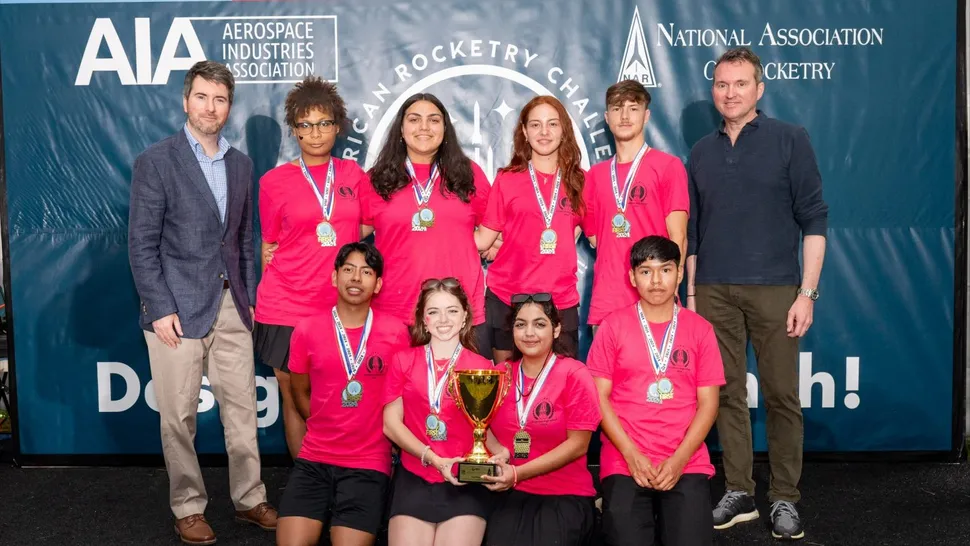Thanks to the U.S. Space and Rocket Center in Huntsville, Alamaba already has a reputation for being home to rocketry. The state now has cause to celebrate that fact, as students from Tharptown High School in Russellville, AL created a rocket that won the top spot in the world’s largest rocketry competition.
The team was named the National Champion out of a record-setting 922 teams at this year’s American Rocketry Challenge at Great Meadow in The Plains, Virginia. The team has competed six times since 2018,, but this is the first time the high school has taken home the victory — in 2023, however, the school placed second. In addition to a prize of $20,000 — and rocketry bragging rights, of course — the students will also now represent the United States in the International Rocketry Challenge at the Farnborough Air Show in July.
“We all work together as a team and come together to give input,” team captain Kylee Beard said in a release. “We have one senior on our team, one sophomore, and the rest of us are juniors, so we’re looking forward to success in the years ahead. To prepare for the Farnborough Air Show, we plan to launch more during the summer — but we need a lot more supplies! But at the end of the day, it’s going to be YOLO [you only live once], because that’s what we do best.”
In addition to Beard, who also built the motor, the team includes Angie Chavez, who led the parachutes, Shyla Martinez, who led the payload, Angel Franco, who led the launch setup and retrieval, Adrionna Ashley, who was the team helper, Jessie Mitchell, who led launch setup and retrieval as well, Isabella Hall, who led the flight sheets and Frank Gutierrez, was the third launch setup and retrieval lead. Andrew Heath, who was the captain of the Russellville City Schools team that won the International Rocketry Challenge in 2015, was the team’s mentor.
It’s no easy task for the students taking part in the challenge. At the beginning of the year, to enter, each team had to present blueprints for creating and building a rocket that met a set of challenge criteria set forth by the Aerospace Industries Association (AIA). To secure a spot in the finals, which allows only 100 teams to advance, each model rocket had to safely carry a hen egg to a height of 820 feet (250 meters), remain in the air for between 43 to 46 seconds, and then safely return to the ground. During the National Finals, there were a few more rounds where the top 100 teams were tasked with launching the rockets to different heights.
“These competitions are catalysts for innovation, challenging young explorers to collaborate and get their hands dirty building a real flight vehicle,” Warren “Woody” Hoburg, a NASA Astronaut who also competed in the National Finals of the inaugural American Rocketry Challenge in 2003, said in the same release. “Congratulations to all the National Finalists for their ingenuity, hard work, and perseverance. These skills will serve students for years to come, as they embark on their careers and create technologies to solve the world’s biggest challenges.”
This was the 22nd year of the American Rocketry Challenge, bringing together teams from all across the United States both in middle and high school. There were teams from 28 states that made the National Finals and competed for $100,000 in prize money and scholarships. The money was split among the top 10 teams and winners of the Marketing Competition, Presentation Competition and Best First-Time Finalist as well. The top 25 also were invited to be part of NASA’s Student Launch initiative.
Source: https://www.space.com/worlds-largest-rocket-challenge-alabama



